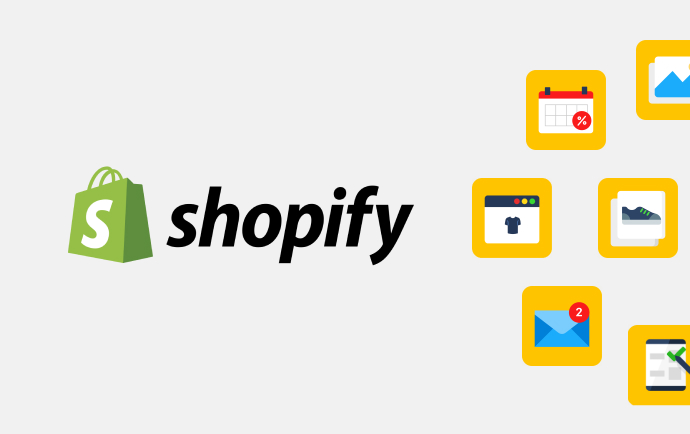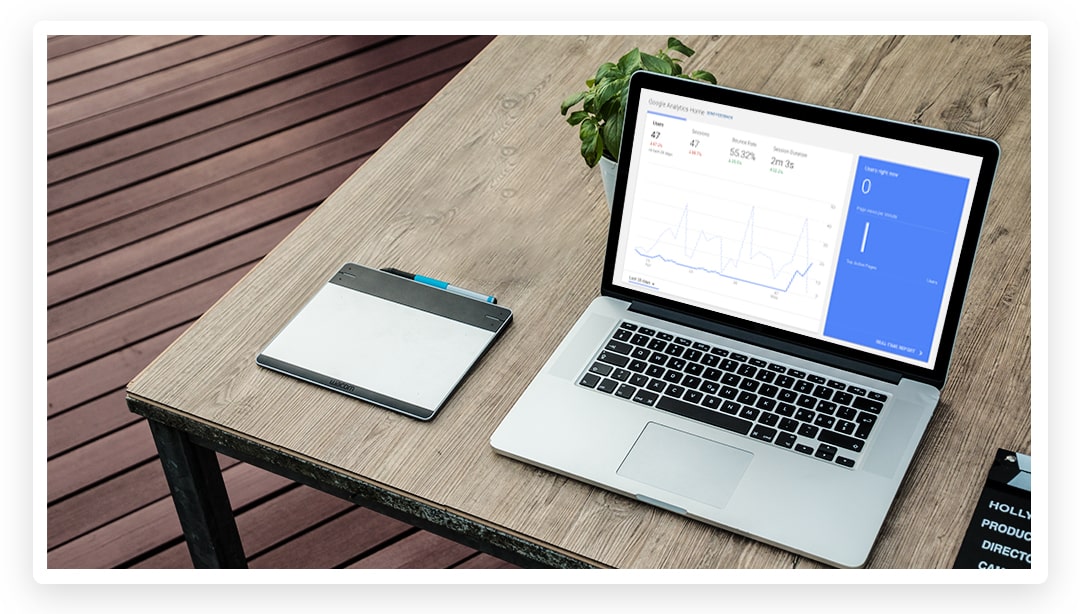
With the immense growth of Shopify, developing apps for the platform has become a highly profitable business. The Shopify app store contains 2,500+ various plugins for merchants, many of which are top sellers. This is why, if you have an idea for your own app, you should try to execute it. Learning how to write a Shopify app that will sell well is complicated – the process can be long and exhausting. We would like to give you a step-by-step guide on how to develop a Shopify app and promote it to get as many users as possible.
Content:
- How to Create a Shopify App: Ways to Promote your Product
- How to create a Shopify app: the best Google Analytic segments to monetize your product
- Conclusion

Shopify supports each of its app developers, making it easy to upload a new plugin and get the revenues from it. Before starting to make your own product, you should figure out what kind of apps are most demanded by merchants. To determine what plugin to create, you need to consider what problems Shopify sellers face each day. To discover the most annoying issues, visit Shopify merchant communities or specific forums.
As soon as you learn the problems merchants suffer from, investigate whether there are any solutions that already exist on the market and how well these apps sell. Sometimes it’s not worth creating another typical plugin if it’s not going to be any different from lots of others. Nevertheless, a large number of similar apps show high demand for a certain kind of product, so your app could attract customers through its pricing or unique interface.
As soon as you’ve compiled a list of problems that merchants would like to fix, and have analyzed the market, you can get down to developing your own application. You can do this on your own or join a Shopify Partner program. You can also outsource the development of the app or control everything yourself using Shopify guides on software creation. Hiring a coding and integration specialist will increase expenses but it will be a good idea if you are not too into programming.
The pricing of your app is also a point that must be well considered. Monitor the market and consider payment plans based on your potential benchmarks to offer users attractive pricing. It’s better to monetize the app using various payment plans based on the number of orders, for instance. Some developers prefer to limit the amount of features for a free plan and offer them for an additional fee.
How to Create a Shopify App: Ways to Promote your Product

As soon as an application is published in the app store, each developer expects it to be downloaded by satisfied customers. But with the huge number of plugins in the market, a new product might go unnoticed without good promotion. There are several ways to market a new application and introduce it to a large audience.
- Involve influencers
To increase the value of your app, offer it to influential sellers for free in exchange for a detailed review of your product. Good feedback from trustworthy merchants will motivate others to try your app at little cost to you.
- Partner with other apps
To enter the market successfully, find apps with similar features and cooperate with their developers. This will have a positive effect on both your downloads and decrease competition.
- Create a blog
Good content builds trust between you and your customers and raises your conversions. Start a blog describing your products with interesting facts, and invite guest bloggers popular in your niche. You can also visit Shopify communities with how-to-guides and give merchants tips on facilitating their everyday routine.
- Use other platforms
Apart from Shopify there are other huge eCommerce platforms that are popular among merchants. Implement integration of your app to allow your customers more growth possibilities.
- Improve your marketing
To increase your app popularity, stick to classic marketing tools: social media and email marketing. Be active, offer your products to potential customers and talk to them in the socials in real time to increase your brand awareness.
How to create a Shopify app: the best Google Analytic segments to monetize your product
Plain development and successful launch aren’t everything. Once you’ve implemented your product in the market, you still need to meet the needs of your customers. Managing your app can be hard if you do it on your own — hire professional staff if you lack the time or skills. Your users will be glad to get professional, dedicated support and enjoy regular updates of the app.
You must track all your data to gain insight into how much your business is worth, and what your progress is. Google Analytic Segments allows you to get precise information and analyze it. Let’s figure out how to increase revenues using Google Analytic’s powerful tools.
There are three main segment levels — user, session and hits. The user segment is responsible for tracking your website visitors. Session tracks users’ actions while visiting your site, and hits shows all site interactions during a session.
The segments can be simple or advanced based on the data they display. Simple segments track your users’ demographic, type of device, behavior at your website, date of first visit and source of finding your website. The advanced ones are conditions and sequences. These two segments are flexible allowing you to gain deeper insight into your users’ behavior.
Why is Google Analytics Segments so important for a developer? Simply put, they provide you with extremely precious information: the number of downloads, which problems your users face, where they found your app, which of your channels are the most profitable, etc. Google Analytics tools can also prevent your app from crashing, and provide you with useful data in the event of a crash.

Google Analytics segments are available for any merchant and developer. You can view the segments and customize them according to your needs. Pre-built system segments are highly-effective, and you can combine them with your own custom ones. Creating a new segment is simple if you know exactly which type of data you need to collect.
The number of segments you can create to get the most informative reports is endless. We’ve curated the most significant ones that will allow you to get valuable information about your target audience and monetize your applications.
Converters vs non-converters
This segment is the answer to the main developers’ question of which users complete transactions and goals. With this segment, you’ll be able to track those who don’t and discover the reasons some users do not lead to conversions. Tracing user behaviour during sessions can sometimes reveal surprising details.

The demographic and age or gender reports also contain crucial information for your business. Knowing who your customers are will enable you improve your applications based exactly on your converters’ needs.
Sessions with conversions
This segment is especially effective for tracking your customers geo-location. Learning which countries’ residents buy your products will show you where you must improve your tools. Adding filters for particular countries allows you to observe the behaviour of users from specific areas. Other reports can show your audience’s interests, age, gender, etc.
High value users
The Recency-Frequency-Monetary segment is not pre-built, but it can be easily created and modified. You’ll be able to determine which users buy your products frequently and bring you the most profit. The recency aspect shows who has purchased your plugins recently and is likely to do it again. Add filters displaying user behaviour, revenues per session, and goal values to view actual, useful information about your loyal users.
Cohorts
Cohorts can be created in accordance with your campaigns to observe new users’ behaviour or concrete user groups over various time periods. This will show you the effectiveness of your promotions and help you plan new ones to maximize revenue.
Potential users
The potential purchasers segment will show you those users who almost bought your app, but abandoned the cart at the last moment. This data can help you see how many users abandon the cart, track their behaviour to see the reasons they chose not to purchase your app, and build up a user retrieving strategy.
Conclusion
Learning how to make a Shopify app in the context of plain coding is simple for Shopify developers, but the whole process includes many actions that determine your product’s success in the market. To boost your downloads, you should analyze the niche carefully, maintain professional user support, and launch a marketing campaign to introduce the plugin to the public.
To analyze your progress and increase revenues, try system Google Analytics Segments and add your own custom ones. The segments will give you precise data on your users’ behaviour and demographics and help you make the right decisions. Experiment with segments and filters and monetize your Shopify app to achieve new business goals!